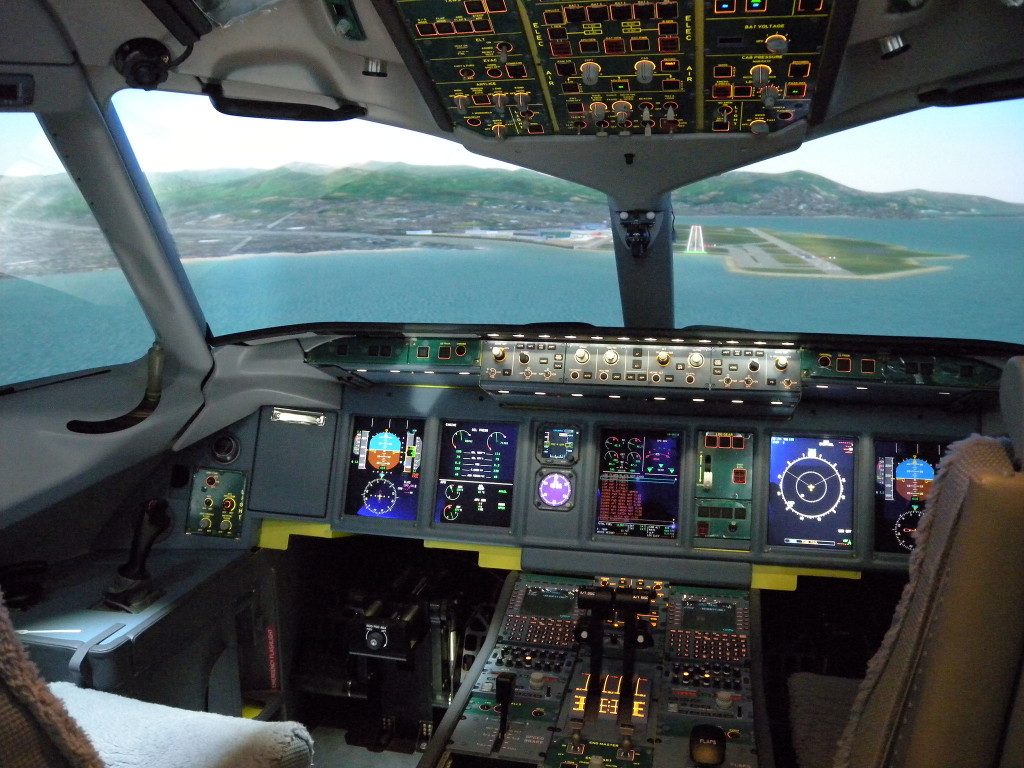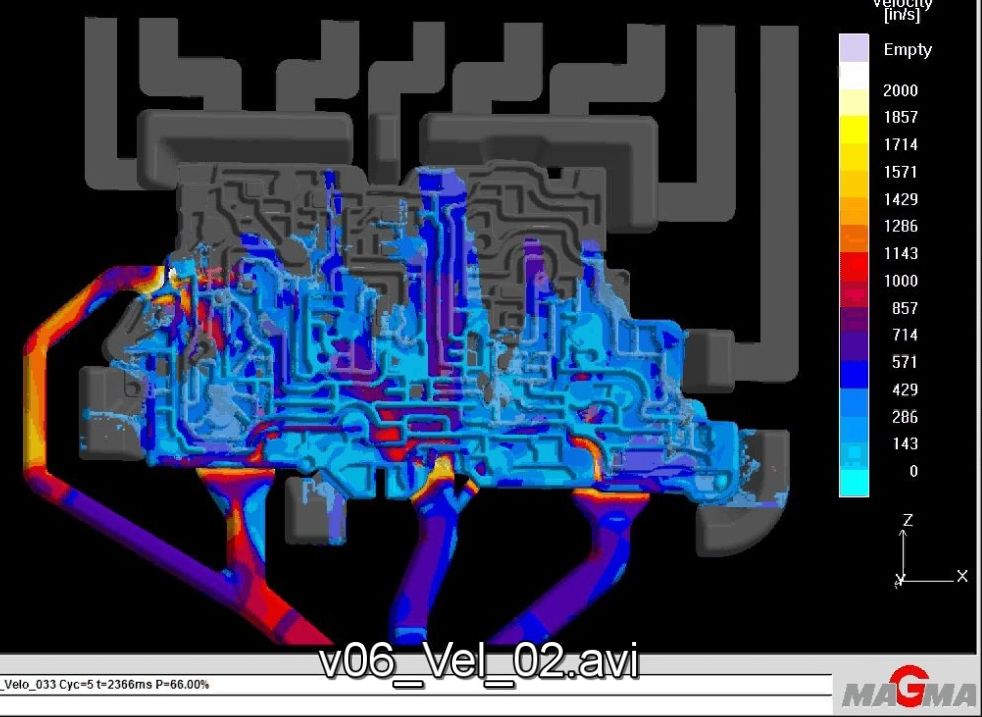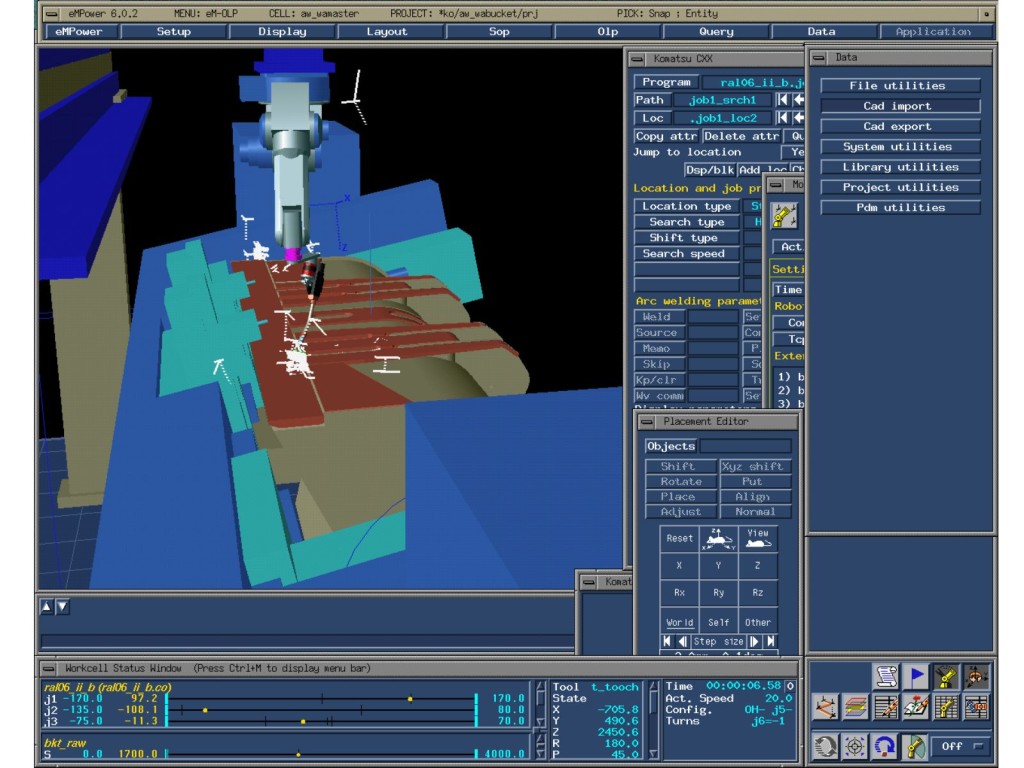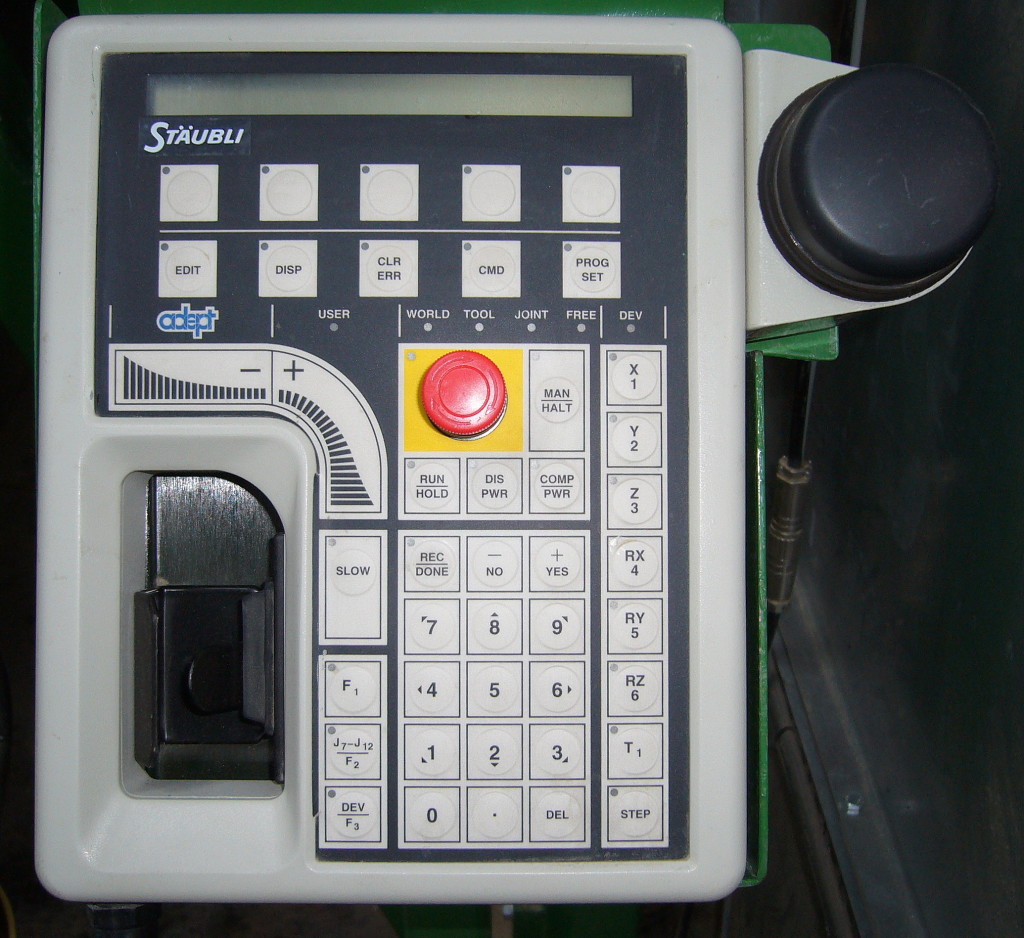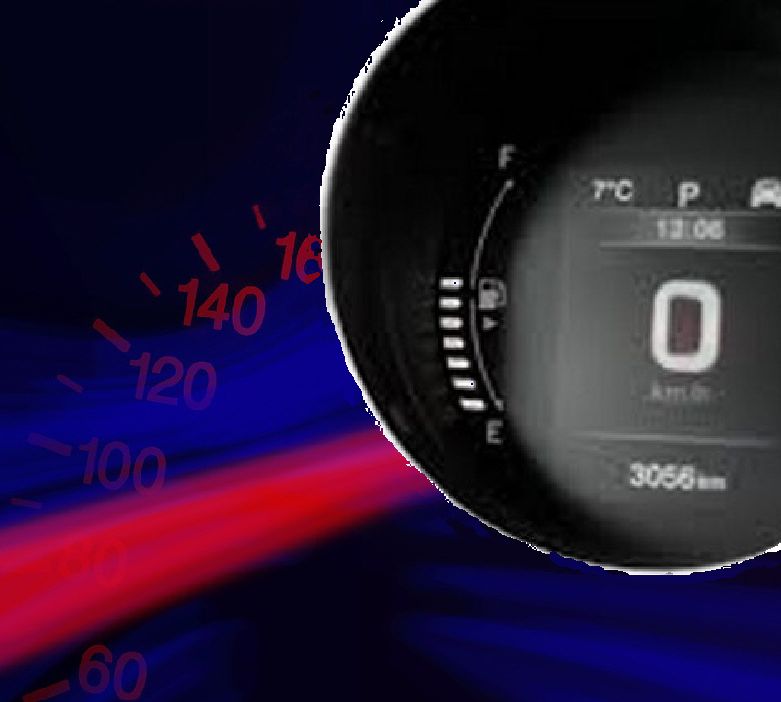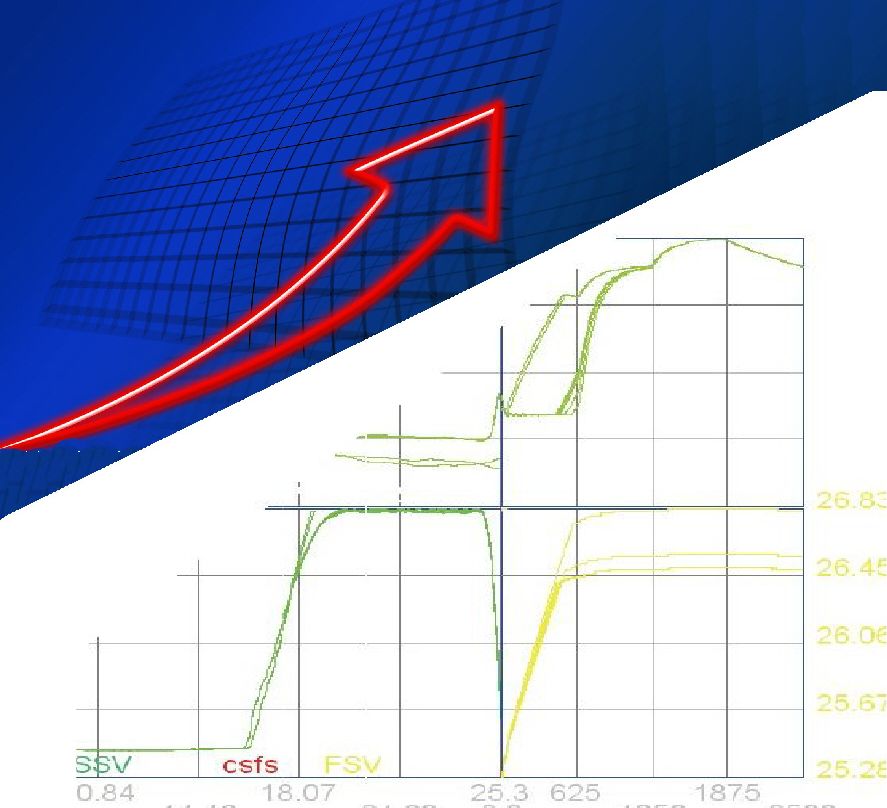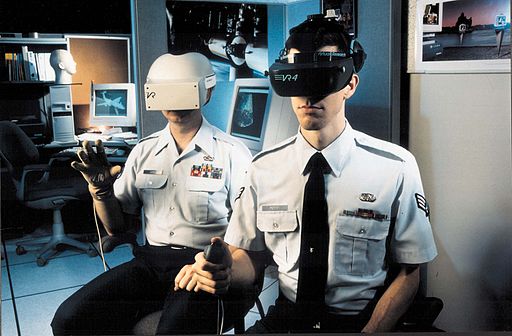 There is a disconnect between the virtual and real world[/caption]
There is a disconnect between the virtual and real world[/caption]
As an technology leader I am attracted to the bright colors in the emerging virtual world. The hum drum real world seems so stodgy dull and grey. Especially in the winter. It is easy to get sucked into the easy to understand simplifications needed to make virtual reality possible. However bright and colorful the food looks in the virtual world it has no smell or taste and my stomach still growls with hunger pangs.
Computerized finite element stress analysis is a really powerful engineering tool. It is very helpful to know the effects of changes in part shape without going to the time and expense of building and testing actual components. In today’s rapid paced business environment the time saving that is possible is necessary to bring products to market before they are obsolete. I am currently using the technique to evolve a vehicle rear suspension into a version that will carry twice as much load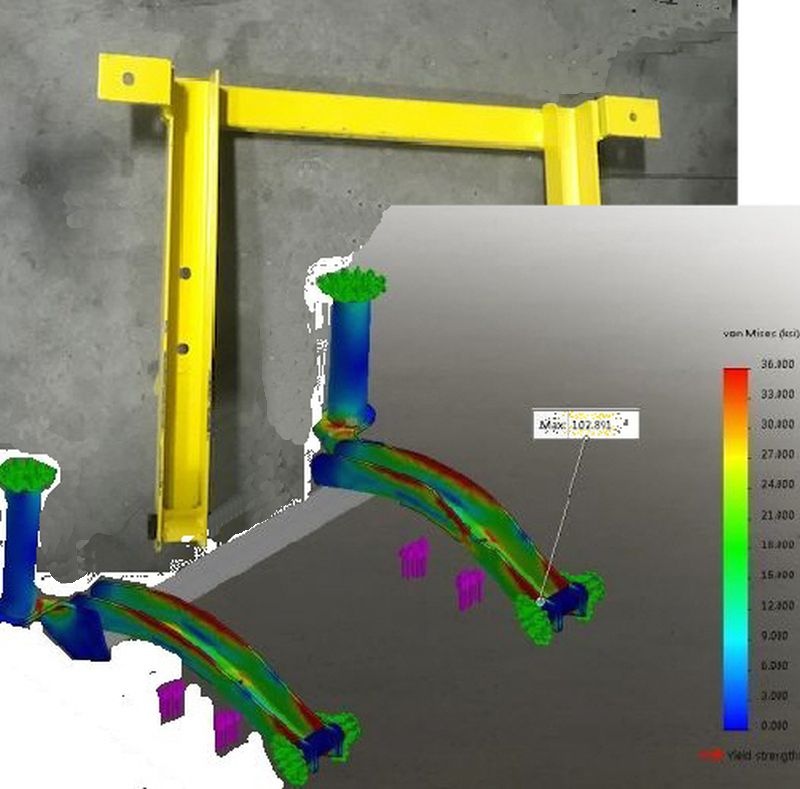
There is a difference between opinioneering and engineering. I think it is going to work is more risky than I performed a representative test and it passed. However much that I like virtual testing like finite element, the purchasers of my vehicles want them to work in more than the virtual world. Fortunately my latest test vehicle did not require the camouflage paint used for automotive test vehicles. In the automotive world, creative paint jobs hide the new model styling from the press.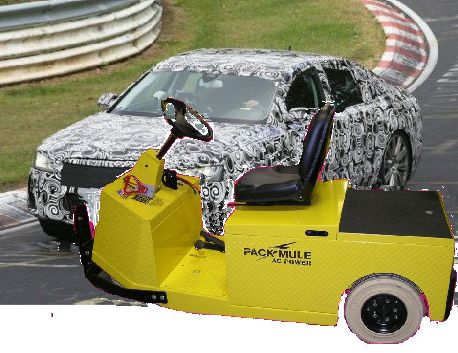 In most cases even a rigorous test program is not enough. I remember an automotive rear suspension frame like I am currently designing that did not show its weakness until some actual vehicles were out on the road. A panic stop while traveling in reverse buckled the rear axle under the vehicle. Not funny when this occurs after the frame was production tooled.
In most cases even a rigorous test program is not enough. I remember an automotive rear suspension frame like I am currently designing that did not show its weakness until some actual vehicles were out on the road. A panic stop while traveling in reverse buckled the rear axle under the vehicle. Not funny when this occurs after the frame was production tooled.
Agile product development addresses some of this issue. In agile fashion, we accelerated placing our new generation of rear suspension arm in actual customer use much earlier in the launch process. This adds a reality check to the computer assisted design and testing.
Tag Archives: Virtual reality
Virtual
Being a Star Trek fan, I remember the original episode that incorporated film footage from the first pilot. In that pilot, the Star Trek team encounter an advanced race that inserted illusion into their minds with such precision that it replaced reality. The stuff of science fiction except for the fact that we are beginning to have that technology. Google with others have invested a billion dollars or so into a Florida Start-up named Magic Leap. They are in a technology category called augmented reality but they like to call it “cinematic reality”. Unlike some of the other virtual reality technologies. their method of projecting light directly at the eye is a lot less likely to make you sea sick. The images that it creates are so convincing that you think that your hand is the illusion when you try to touch the projected images. Before you dismiss this technology as a video game, be aware that there are commercial uses for a technology that can display activity beyond the vision of your eyes.
The next time you are flying, it will be comforting to know that the potentially new pilot flying the plane is not using this flight as a training tool to hone his ability to land the aircraft under all kinds of adverse conditions. Modern virtual reality in the form of flight simulators allows pilots to practice landing at many of the airports of the world. We are happy to know that the pilot flying the plane has practiced landing enough times to react instinctively to the turbulence around him. Other things, we would like to “see”, are hidden inside opaque objects, occur too fast or slow, are not our scale, lack contrast, or have other mismatches. In the molding industry the filling process is occurring inside an opaque mold at extremely high speed. As we adjust the shapes to improve the part quality it is helpful to have a virtual testing tool to guide our efforts. This technology reduces the amount of expensive trial and error mold changes needed to achieve a commercial yield from the mold.
In the emerging mass customization era, we do enough part set-ups that we can no longer afford to tie up the production equipment to train the robots. The availability of 3D models for the parts and equipment makes offline pre-programming of the robot path commonplace. This matches the Japanese SMED (Single Minute Exchange of Die) strategy invented by Segeo Shingo. Job shops who employ welding robots are the heaviest early adopters of this virtual technology. It is easy to more than double the through-put of a robot welding cell when you can minimize the time that it is not burning
the arc
Display
Indicator lights- The earliest computers borrowed from the machine control heritage and
included lots of indicator lights. These lights were mostly used to determine which vacuum tube had burned out and needed to be replaced. We are all familiar with the usefulness of indicator lights. The message displayed by these lights has become more sophisticated as we can afford more computing horsepower to embed decision logic behind the light
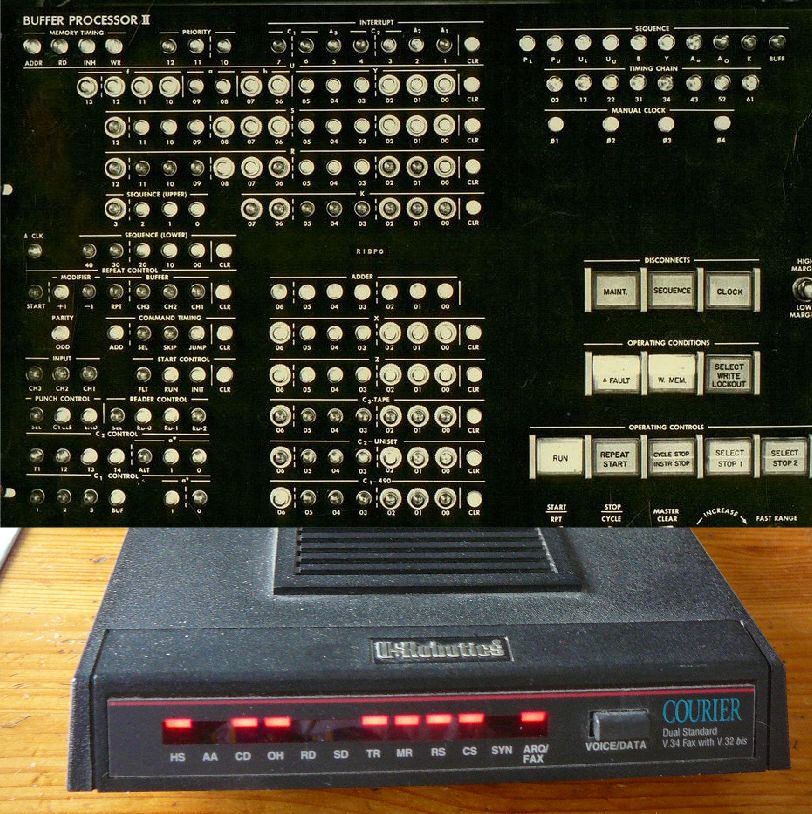
Indicator lights have been at the backbone of computers from the beginning
Univac Buffer by Travellerva
US Robotics Modem by Bortzmeyer
WYSIWYG- What you see is what you get- The first thing that you notice when you pick up a robot teach pendant is that there is no display screen. Once you are actually controlling the robot, there is no need to substitute a virtual display. Shigeo Shingo (Japanese manufacturing methods pioneer) would approve of the software that does use a screen display that allows preprogramming of robot tasks ahead of time without consuming robot operating time. Based on my experience, I can assure you that most pre-programmed routines will require touch up where the robot itself is the display.
UX- user experience- Speedometers started as mechanical devices run by a rotating cable connecting to the drive shaft. A digital display was implemented when the dash was computerized. The automotive engineers wanted to advertise this conversion by creating a dash panel display that showed the speed as a digital number. This style of display was disliked by the buying public and a simulated bar style analog speed display emerged as the user preferred choice. Not every car design group has learned to utilize UX. You can make your own decision as to the sum of factors that resulted in the Fiat 500 flop in the marketplace. The digital speedometer shown is just one candidate. A joke applies. Two hikers in the woods hear a bear behind them. One opens his pack and puts on his tennis shoes. The other tells him “You can’t outrun a bear” He replies “I don’t have to. I only need to out run you” In true world class competitive fashion the pendulum will swing such that different auto manufacturers are the ones struggling to keep up. I remember when Lee Iacocca brought European front wheel drive back to America after test driving some Fiats.
Trends – The embedded computers can inform you with 100% certainty that your car is having a problem when you are stranded at the side of the road. Not very helpful. Those of us who spent a chunk of our lives inventing the advance warning systems, wanted to have the voice reminder system say “I told you so” when the car stopped because the user ignored the warnings we created. Not very helpful either. Our ability to predict impending failure is the combination of big data analysis of all 200,000,000 cars that have on board diagnostics and the ability to watch data trends within the ¼ petabyte of data each car generates in real time. At the other end of the big data spectrum is a one-of-a-kind control like I just finished installing. As a one-of-a-kind there is not a pool of experience to predict failures. However, this does not stop us from displaying the trends in graphic overlay format to maximize the visibility of impending issues. This allows the user to simultaneously digest data that would occupy many table pages.
Context- Before we had modern CAD and Virtual reality, it was necessary to use sketches to communicate concepts. Having a better than average sketching ability, I occasionally got into trouble because I could make something that was impossible look like it would work. Many of the displays we use come to us from the game industry. Even though 3D CAD enables the average person to visualize the detail parts that we draw they lack the context of what they are used for. This is especially true for novel approaches. I use Carrara which is a video game software to combine my 3D equipment models with the surroundings so that it becomes possible to explain how they work.
Emerging displays. We are watching the evolution of even more powerful displays. Remote piloting of drones is even easier when the pilot has the same visual input as an on board pilot. This silicon valley driven technology will grow to even wider use when some of the flicker and headache causing instablity has been overcome by even more computing horsepower.


